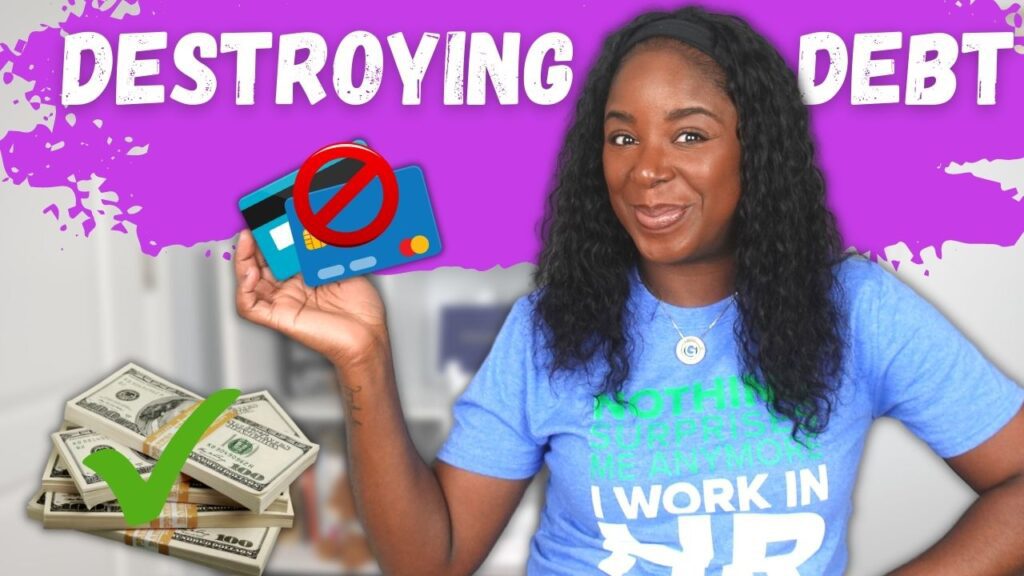Are you trying to figure out how to stop living from paycheck to paycheck? Want to buy your first home, but you aren’t sure where to start? Personal money management is the first step to getting financial freedom and this blog post will tell you all about it.
Understanding the basics of finance is a critical step toward achieving personal financial stability and success. Financial literacy is essential in today’s world, where money plays a pivotal role in everyone’s life. By educating yourself on finances, you can make informed decisions that will shape your future and secure your financial well-being. It involves knowing how your income works, what your expenses are, and how to balance the two for effective money management. Creating a budget and sticking to it is one of the most fundamental aspects of personal finance. It allows for a clear view of your financial situation, which is crucial for planning ahead.
Knowing your financial standing makes it easier to determine your salary goals and stand firm during salary negotiations. This blog post is all about understanding your personal finances to gain financial freedom.
Understanding Your Income and Expenses
Before diving into a budget, it’s essential to have a clear understanding of your income and where it goes every month. This process sets the foundation for strong financial health. When I finally got tired of barely living paycheck to paycheck or even worse, being broke on payday, I started by looking at my spending habits. Without researching and finding Dave Ramsey and Tiffany Aliche (aka The Budgetnista), I would have never thought to do that.
It was so insightful. There were some things I did well like bringing lunch to work, doing all of my errands at the same time to save gas, working overtime on a regular basis, and writing out what needed to be paid on payday. On the other hand, there were TONS of things I did wrong, like not making a budget for all bills and subtracting that from my income/paycheck amount, spending more money on wants than needs, buying what I wanted before paying bills and the list goes on. Starting with a spending diary and comparing that to my actual bank statement was a game changer! It also got me prepared to start budgeting.
Creating a Budget: Monthly Income
To create a budget, you first need to determine your total monthly income. This includes your net salary (aka your take-home pay), any side income, and side hustles. Personally, I use a spreadsheet to track my income. If you are not comfortable with Excel spreadsheets, then feel free to use good ole pen and paper. If you don’t trust yourself to include everything when you write it out on paper, then there are tons of budgeting apps that you can use. Some are free or very low-cost while others may be a bit more expensive. After you gather your total income and total expenses, then it will be easier to set financial goals.
In addition to setting financial goals, budgeting made it much easier to determine my salary. The budget creates a starting point or minimum salary that you can take. When you add financial goals, this gives you a maximum salary range. It is important to stay focused, determined, and committed to at least your minimum salary. If you are not able to get your salary to equate to your budget, then include some side hustles, overtime, or part-time jobs to get your income to meet or exceed your budget. Throughout nearly my entire human resources career, I had multiple side hustles and I listed them all here in Discover How HR Pros Can Make Money on the SIDE!
To create your budget, start by listing all sources of income in one column.
Sample Income Table:
| Source of Income | Amount (Monthly) |
|---|---|
| Full-time Job Salary | $3,000 |
| Part-Time Job | $500 |
| Miscellaneous (e.g., Freelance) | $200 |
Once your income is laid out, allocate amounts to necessary expenses (aka your bills, gas, groceries, etc.). Typically, when you are trying to get started or comfortable with budgeting, it is difficult to save. For me, it was the hardest thing ever and I still struggle with it from time to time. The best trick is to start saving $5-$20 per paycheck in a bank account that is at a separate bank from your main bank and elect to NOT get a debit card. Avoid checking that account every paycheck. By checking that account periodically (i.e. quarterly or every 6 months), you will start seeing saving as being a bit easier.
A common method used is the 50/30/20 rule, which divides spending into needs, wants, and savings or debt repayment. In this case, you will budget 50% of your income to your needs like rent or mortgage, electricity bill, water bill, transportation costs, food, etc. You will budget 30% of your income to your wants like eating out, entertainment (i.e. concerts, movies, etc.), and personal maintenance (i.e. massage, manicure, pedicure, expensive hairstyles, etc.). The remaining 30% goes towards savings.
Creating a Budget: Analyzing Monthly Expenses
Next, list and categorize your monthly expenses. Split them into fixed costs, like rent or mortgage payments, and variable costs, such as dining out or entertainment. Prioritize essential expenses like groceries and transportation costs. Personally, I learned the hard way that grocery shopping then cooking is much cheaper than eating out every day. After that, identify areas for potential savings. This is where you can take leftovers from dinner as lunch for work the next day, work from home when possible to decrease the amount of money you spend on gas or wear your expensive hairstyles for a longer period of time.
I started bartering with my girlfriend. I helped her with her papers and essays for school and she did my hair for either free or super low-cost. There were times I would purchase $25 wigs (yeah, this was nearly 10 years ago…lol), then wear those for months. Over time, I found more and more unique ways to be creative with my expenses and it worked!
Sample Expense Breakdown:
| Expense Categories | Estimated Cost | Actual Cost |
|---|---|---|
| Housing | $1,000 | $1,000 |
| Utilities | $300 | $320 |
| Groceries | $400 | $380 |
| Transportation | $250 | $260 |
| Entertainment | $150 | $200 |
| Total Expenses | $2,100 | $2,160 |
By meticulously tracking your income and expenses, you gain a clear picture of your financial health. You also gain confidence in your spending and you decrease stress. Use this information to adjust spending habits and increase savings. This will help you to achieve financial stability.
Saving and Investing Wisely
To secure your financial future, it’s vital to develop a strategic approach to your finances. Constructing a robust emergency fund, evaluating retirement options, and understanding various investment vehicles are foundational to managing your money effectively. Please do not think that you have to do all of this at once. Simply getting accustomed to budgeting can take months!
Once you get comfortable with budgeting where you have money left over from paycheck to paycheck or simply feel comfortable with sticking to your budget without having to look at it before every spend or financial transaction, then you will be in a perfect space to start building your emergency fund first. After saving, then you can move to the next goal of retirement savings. As you get comfortable with that, then you can explore investing.
Building an Emergency Fund
Your emergency fund acts as a financial buffer that saves you from incurring debt when unexpected expenses arise. It’s generally recommended to start with a savings target of three to six months’ worth of expenses. I took the Dave Ramsey approach of saving $1,000 in a bank account where my checking account and savings account were at the same bank. Later, I opened a savings account at a different bank where I do not have a debit card and started saving six months to a year of living expenses. It is highly suggested to look for a savings account offering a competitive interest rate to help your fund grow.
Considering Retirement Options
When it comes to planning for retirement, starting early can make a significant difference. Maximize contributions to tax-advantaged retirement accounts, such as 401(k)s and IRAs, which can compound over time. Be conscious of the investment options within these accounts and align them with your retirement goals. Retirement options can become very confusing. It is best to consult with a retirement professional before starting retirement contributions.
Exploring Investment Options
To diversify beyond traditional retirement accounts, explore additional investment options. Mutual funds offer professional management and diversification, while stocks and bonds present opportunities for capital gains and income, respectively. For a balanced approach, consider index funds which track the performance of market indices and typically offer lower fees. Remember that all investments carry risk and potential return is closely tied to the level of risk taken.

Managing Credit and Debt
Effectively managing your credit and debt is foundational to your financial health. This includes understanding various types of credit, the impact on your credit score, and implementing strategies to manage and repay debts. Though credit is important, I highly suggest not getting credit cards or revolving credit until you are completely comfortable with managing your budget and saving.
Credit can be a great tool to purchase your first home, getting low interest rates on auto loans and other lines of credit. If not managed well, it can be the reason you spend a lot of money on interest rates and other high fees or not get approved for other lines of credit at all.
Understanding Credit Cards and Loans
Credit Cards: These are revolving credit lines that offer you a set limit, which can be borrowed against each month. Your credit score, a numerical representation of your creditworthiness, can fluctuate based on your credit card usage and payment history. It’s crucial to be aware of the Annual Percentage Rate (APR), which is the interest you pay annually for any balances carried beyond the monthly payment period.
- Personal Loans: Fixed amounts lent to individuals typically with a repayment schedule at a set interest rate where payments are made on a monthly basis. Unlike credit cards, personal loans offer a one-time lump sum.
- Payday Loans: Short-term, high-cost loans typically due before your next paycheck. These loans can be predatory, with exorbitantly high APRs. It is common that these types of loans may put you further in debt or have a negative impact on your budgeting. The US has been considering closing the businesses that offer this type of loan.
- Student Loans: Loans specifically designed to cover education costs. They may be provided by the government or private lenders, with varying terms and interest rates. These loans typically cover tuition costs, room and board, and educational supplies. Most loans do not require repayment until after you have completed college or are no longer enrolled in college.
- Mortgages: Long-term loans used for purchasing property. Your credit report, a record of your credit history, plays a significant role in determining the interest rate you’ll qualify for.
Strategies for Debt Repayment
- Snowball Method: Pay off debts from smallest to largest regardless of interest rate, gaining momentum as each balance is paid off.
- Avalanche Method: Prioritize debts with the highest APR, which may save you more in interest over time.
Remember, maintaining minimum payments on all other debts is critical when using these strategies. Explore restructuring options for student loans or mortgages to take advantage of lower interest rates, which can be instrumental in your debt repayment plan.
There have been times in my debt-free journey when I have changed my strategy for debt repayment. Increase in income, pay frequency, family adjustments (i.e. graduation, college, etc.), being unemployed, and so many other life issues have caused me to make changes in how I repay debt. At times, some situations have caused me to pause on debt payments.
Planning for the Future
Proper financial planning sets the foundation for a secure future. In addition to a budget, good credit, and low debt, other key components involve clear financial goals and knowing the essentials of estate planning to safeguard what you’ll accumulate over the years.
Setting Financial Goals
Your financial plan should start with setting financial goals. Identify what you hope to achieve quickly or in the near future and in the years to come or long-term. For instance:
- Short-term: Save for an emergency fund covering 3-6 months of expenses or 6 months – 1 year, whichever you think is safer.
- Long-term: Plan for buying a home or saving for retirement.
Feel free to not limit yourself to the examples listed here. Financial goals should be completely customized to you and what you aim to achieve. Use a table to categorize and prioritize your goals:
| Time Frame | Financial Goal | Priority |
|---|---|---|
| Short-term | Emergency fund | High |
| Mid-term | Down payment for a home | Medium |
| Long-term | Retirement savings | High |
Remember to review these goals often. Initially, reviewing them quarterly may be important until you get used to your everyday life which will impact these plans. As time goes on, reviewing your goals annually may work out fine. As your situation and the financial landscape change, reevaluate your goals.
Estate Planning Essentials
Estate planning isn’t just for the wealthy; it’s a critical component for protecting your assets and ensuring your wishes are honored. Though these are very beneficial while living everyday life, these also become most helpful and noticeable during difficult times or even after you pass on from living life.
Estate planning essentials include:
- Will: Dictates the distribution of assets and care for minor children.
- Life insurance: Provides financial security for your dependents.
- Health insurance: Protects against financial strain from medical issues.
- Homeowners insurance: Safeguards your home from unexpected events.
Consider these policies and how they interplay with your life stages, family, current assets, and future assets.
By addressing both financial goals and estate planning, you create a stable foundation for yourself and your family’s future. Your plan should be as dynamic as your life and adaptable to whatever changes may come your way.
Ensuring Adequate Protection
To shield your finances from unforeseen damages and liability claims, it’s crucial to understand and know your insurance requirements and the various policies available. This will make it easier to determine what types of protections you need and the levels or types of protections that will cover your minimum expectations.
Assessing Insurance Needs
Before diving into the world of insurance, you must evaluate your situation to determine the types and levels of insurance coverage necessary. Start by taking stock of your assets, considering your dependents, and reflecting on potential risks. For example, your driving habits and vehicle value will directly influence your auto insurance needs.
- Assets: List your major assets including property, vehicles, and investments.
- Dependents: Consider who relies on your income, such as children or elderly parents.
- Risks: Identify potential risks in your daily life, such as driving to work or owning a home in a flood-prone area.
Understanding Different Insurance Policies
Once you’ve assessed your needs, it’s time to understand the policies that can provide you with adequate protection.
- Insurance Basics: Policies typically include terms like premiums, deductibles, and coverage limits. Make sure you understand these before signing any policy that is presented to you and definitely before making payments and financial commitments.
- Auto Insurance: This is often legally required and includes different types of coverage such as:
- Liability Coverage: Protects you if you’re held responsible for an accident causing injury or property damage to others.
- Collision: Covers damages to your car from an accident.
- Comprehensive: Provides protection against theft and damage caused by an incident other than a collision.
- Other Insurance Types: Look into health, life, homeowner’s, and renter’s insurance to provide a comprehensive safety net.
It’s essential to match your liability coverage to your personal risk profile. In auto insurance, for instance, if you’re driving an expensive car or have significant savings and property, increasing your liability coverage can protect your assets from potential lawsuits.
Remember, insurance is not one-size-fits-all. Carefully review your personal situation to make informed decisions about the insurance coverage that best meets your needs and one that will be most grateful to rely on it during your hardest times.
Key Takeaways
- Gaining financial education is key to making informed personal finance decisions.
- Effective budgeting and understanding of expenses are fundamental to managing money.
- Knowledge of saving, investing, and debt management can lead to sustained financial health.
Frequently Asked Questions (FAQs)
Navigating your finances requires understanding some key principles and strategies. This section addresses common inquiries to help lay a strong foundation for your financial knowledge.
What does the 50/30/20 rule entail for budgeting?
The 50/30/20 rule is a budgeting framework advising you to allocate 50% of your income to necessities, 30% to wants, and 20% to savings and debt repayment. It’s a straightforward approach to structuring your finances to balance your current and future financial needs.
What are five core principles of personal finance that everyone should know?
Five core principles of personal finance include: 1) paying yourself first (saving before spending), 2) living below your means, 3) using credit wisely, 4) investing for the future, and 5) consistently monitoring and adjusting your financial plan. These principles form the foundation of good financial health.
How can a beginner start learning about personal finance?
As a beginner, you can start by educating yourself on financial literacy basics, such as budgeting, saving, investing, and managing debt. Using resources like books, websites, blogs, online courses, and actual practice will grow your knowledge.
What key concepts are usually covered in a Finance 101 course?
A Finance 101 course generally covers key concepts like the time value of money, budgeting, the role of credit and debt, investment fundamentals, and understanding financial statements. These concepts provide the groundwork for making informed personal and business finance decisions.
How can young adults effectively manage their finances for a secure future?
Young adults can manage their finances for a secure future by starting to budget early, saving early, understanding and using credit responsibly, investing in their education and career development, and setting long-term financial goals. Seeking professional financial advice can also be a wise step in building a strong financial foundation.
You May Also Like:
- How I Went From a 545 Credit Score to an AMAZING 707
- Financial Freedom: Crushing Debt on a Budget
- Discover How HR Pros Can Make Money on the SIDE!
- 5 Easy Ways to Get Pay Increases






 Subscribe to my channel
Subscribe to my channel